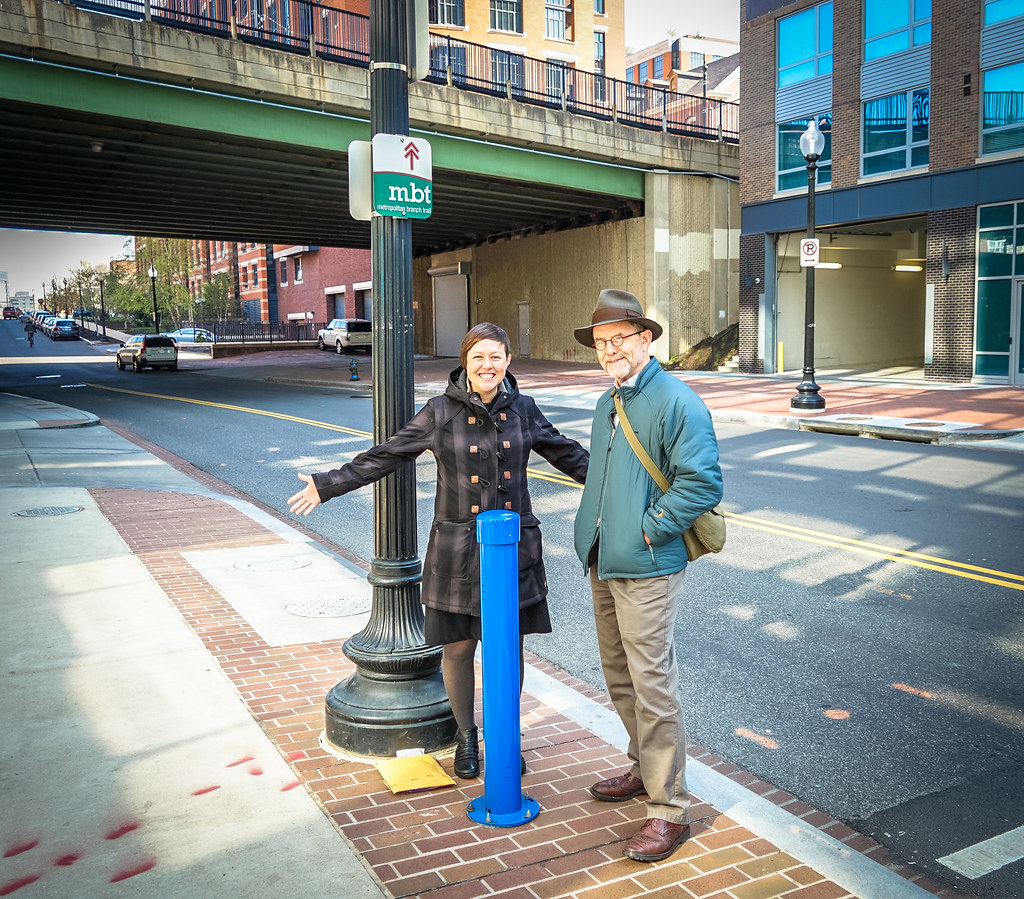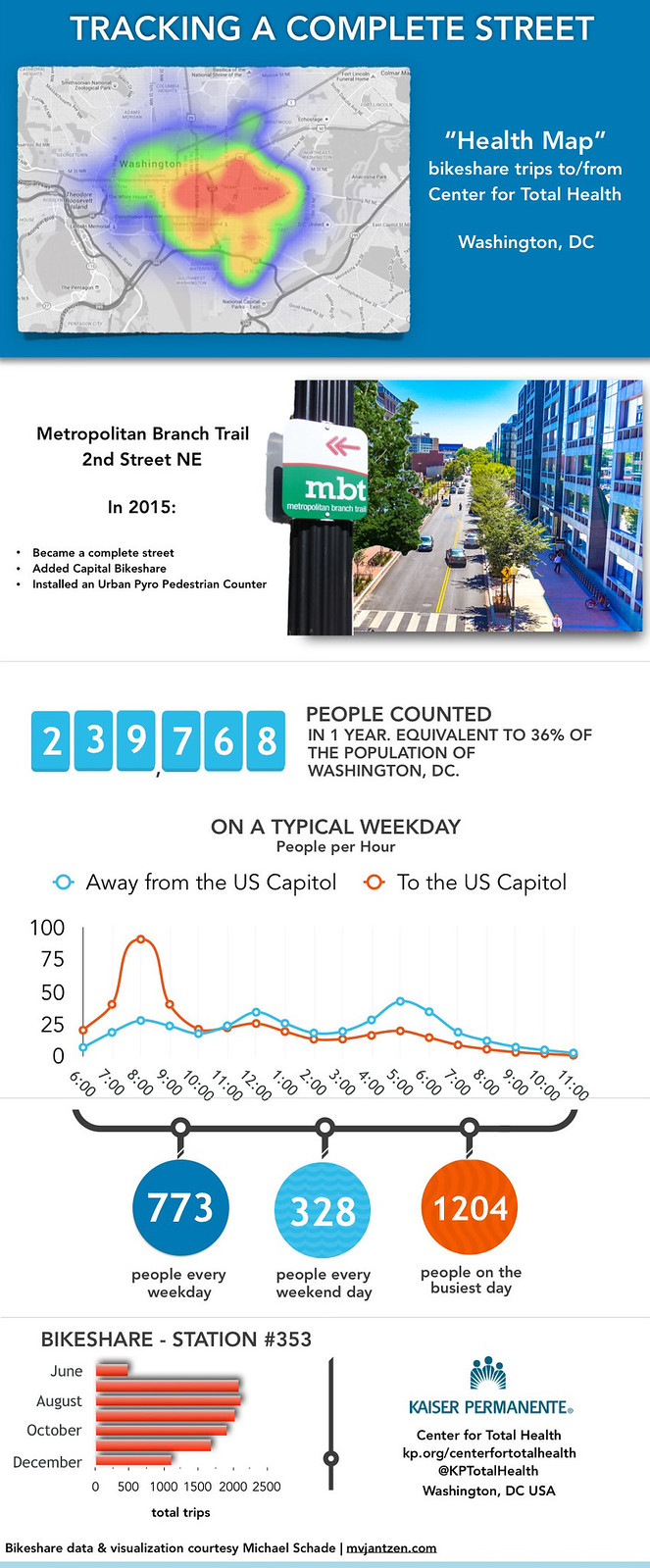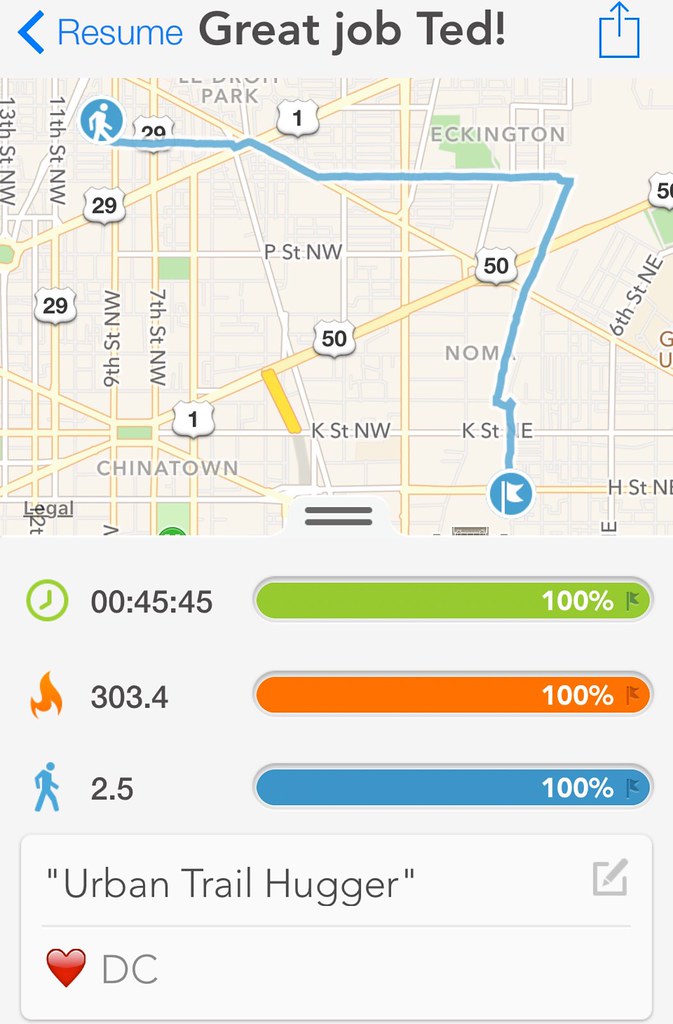A very cool unintended (or intended?) consequence of sensing your environment is that you start to think about how to improve it.
With that in mind, I found this look at the Metropolitan Branch Trail (MBT), which the Kaiser Permanente Center for Total Health is fortunate to co-inhabit.
Why fortunate? Because the report tells a story of great potential of an important urban resource. The MBT, like much of Washington, DC is not finished, and it is, like our nation’s capital, the best learning lab ever for Total Health.
Stimulus to explore here was provided by the Design and Health Leaders Group of the American Institute of Architects (@AIANational) (see this post: Doctors should love architects: Design & Health Leadership Group 2016 Meeting ), and the team at the Washington, DC Office of Planning (@OPinDC).
Sensor citizens
ACTION:
Immediate: Share user data collected by existing Eco-Counter on the MBT to encourage crowd-sourced app development.
One of the report’s main conclusions is that the trail’s success in being safe and effective (for health – an urban trail can be as powerful as any medicine) is having more people on it.

One way to have more people on it is to provide real time measurements of its use.

The Center for Total Health installed an Eco-Counter on the trail in 2015, and it has been pouring data into the public consciousness ever since.
We just gave it a brand new gsm battery last week, with the help of friends at Bike Arlington (@BikeArlington) and Rails to Trails (@RailsToTrails) Tracy Hadden Loh, PhD (@BusySparrow). It’s recharged and ready to go.
Our Eco-counter (@Eco_Counter) has also been joined, temporarily, with a different type of population sensor that uses computed video instead of infrared signals. Both produce beautiful data that we can share with the community about how the trail is being used:

I recently did an analysis of the Placemeter data to look at the impact of the metro shutdown (see: Using our Placemeter video population sensor to explore the metro shutdown ).
Identity, Activation, Programming
The report goes beyond safety and into things I hadn’t thought of before, like giving the trail a brand and identity.
As buildings transition uses and as new buildings are constructed along the Trail, it is essential that these buildings present an active interface with the Trail. Buildings should have a high degree of transparency with large windows and active uses in the ground floor. Where possible and practical, active doors would increase interaction with the Trail and increase the sense of integration with the community adjacent the Trail.
Same thing goes for programming. As I learn more about how the trail is being used, or at least the section we sit on, it appears that it’s currently a conduit – a pleasant one – but not yet a place of enjoyment.
What they don’t teach us in medical school
….the list is long. However, what they don’t teach us in facts they do teach us in the insatiable curiosity of ways to improve the health of the people we serve (well, medical school plus the medical specialty of the future, family medicine 🙂 ).
When we first came to the Center for Total Health, we weren’t oriented to the trail as a place that’s connected to the place where we serve. We’re now sensing it (digitally and emotionally) and this report tells me that the rest of the community is too. Total Health in motion…

Thanks to the NoMA Business Improvement District (@NoMabid), District Department of Transportation (@DDOTDC), Metropolitan Police Department (@DCPoliceDept), and the other authors of the report (The JBG Companies, EDENS, Level 2 Development) for taking the time to inform their fellow health advocates!
The hashtags #NoMagical and #NoMazing fit.
2 Comments
RT @tedeytan: Just Read: The Total Health of the Metropolitan Branch Trail #MetBranch #MBT thx @NoMAbid @DDOTDC @DCPoliceDept https://t.co/…
RT @tedeytan: Just Read: The Total Health of the Metropolitan Branch Trail #MetBranch #MBT thx @NoMAbid @DDOTDC @DCPoliceDept https://t.co/…